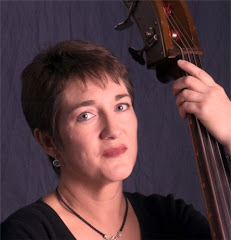Learning to speak and to write
The learning processes for literacy and for speech have more similarities than differences. Both are holistic - that is, whole-life learning processes, begin very early, show characteristics of a series of developmental stages, and are dependent on frequent and regular human interaction for both motivation and modeling.
Just as speaking and listening are processes that begin to emerge in infancy (where appropriate stimuli exist), the foundations for reading are laid early on in development stimulated by appropriate interactions in speaking, listening, and written language. As the IRA/NAEYC Position Statement (1998) puts it,
. . . [R]eading and writing acquisition is conceptualized better as a developmental continuum than as an all-or-nothing phenomenon. (p. 3)
Further,
Experiences in [the] early years begin to define the assumptions and expectations about becoming literate and give children the motivation to work toward learning to read and write. (p. 3)
The Matthew Effect: “Haths” and “hath nots”
Sociologist Robert Merton coined “the Matthew Effect” to describe the different human trajectories established by the presence or lack of timely and appropriate opportunities. The ubiquity of this pattern in our culture has tended to render it invisible, or paint it as inevitable [often confirmed by quoting another verse from the Gospel of Matthew: “The poor you will always have with you . . .” (26:11a, KJV)]
In emerging literacy, the pattern produces an ever-increasing skills gap between the “haths” who receive appropriate learning opportunities and the “hath nots” who lack them. Over time, the skills gap becomes an access gap - a disparity in access to the commonweal that perpetuates social and economic injustice.
Communication skills are vital to our participation in human activity; at this time in our culture and history, mastery of the written symbol is almost as necessary as that of speaking and listening. Without advancing along the literacy continuum to a position of skill mastery, many doors to communal and cultural participation are closed.
Helping learners advance along the literacy continuum
We know that, as teachers, we are responsible to each of our students for providing them with appropriate learning opportunities. However, because each group of students comes to us across such a broad range of the literacy continuum, we don’t yet know how to do that.
The Position Statement (2000) of the International Reading Association (IRA) acknowledges the challenge and defines the approaches and attitudes with which we can hope to succeed at this daunting but vital task. Built upon that document, I leave today’s readings with some resolutions that I hope will inform my teaching.
Where to begin:
· Understand the literacy continuum.
· Believe in the research-supported assumption that we can advance each student along that continuum.
· Have in my toolbox a wide variety of methods and materials that support our research-based principles for literacy instruction, and implement them strategically rather than along convenient but arbitrary program lines.
· Teach “hands-on literacy” in direct, interactive ways – showing as well as telling; guiding individual performers within their appropriate zones of development.


Maria-
ReplyDeleteI was unaware of the name of the discrepancy between the "haths" and the "hath nots" (i.e. The Matthew Effect) but am glad to have a term to use now. I agree that as future teachers we face a big hurdle in creating a level playing field for our students to start from. I often wonder how to provide the opportunities and learning experience for those students that have not had as many opportunities to learn...I guess this is just one more obstacle we face in this field (as if we didn't have enough to overcome to begin with).
I will wear the "technologist" hat for a moment and comment:
ReplyDeleteThe field of educational technology is also hobbled by attendant "skills gaps" and "access gaps." Tech literacy -- or media literacy or information literacy or New Literacies, whichever and whatever (!) -- will always be stunted by these disparities until the gaps are closed. I am deeply concerned about issues of access.
That said, if a teacher is appropriately trained and equipped, she can use technology in ways that deliver "timely and appropriate opportunities" to students who otherwise miss out. You might like to check out the work of Brian Crosby. He is an elementary teacher in Sparks, NV, and if memory serves, he works with a phenomenally diverse student body. His blog is called Learning is Messy. (Love that!) I recommend his 2007 keynote presentation at the K-12 Online Conference. You can watch it as a movie or download a podcast. (Scroll down the page to find the desired link.)